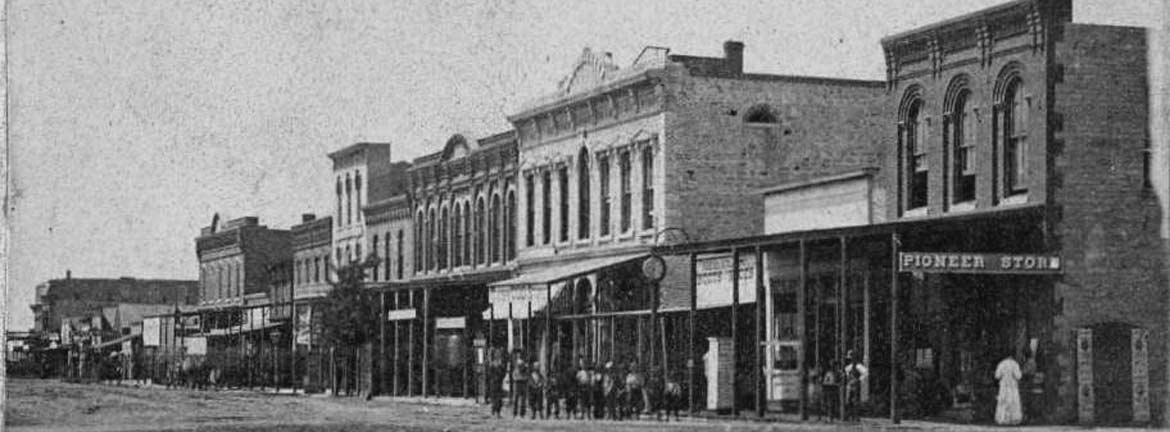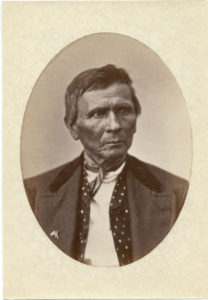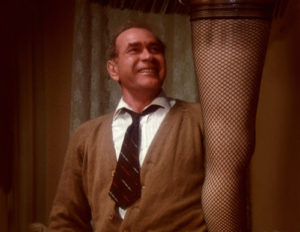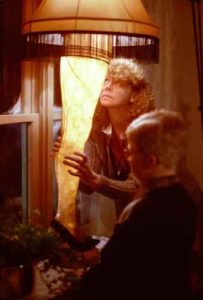by Kristine Schmucker, HCHM Curator
Part 1 of 2 blog posts. Part 2
In 1861, Col. William H. Emory was in a vulnerable position. Tensions were high between southerners or secessionists and the Union north. Stationed at Fort Washita in Indian Territory, Emory, a Federal officer, was surrounded by secessionist states. In April 1861, he was forced to evacuate his troops after receiving reports of the advance of Confederate troops from Arkansas and Texas. At Fort Cobb, Emory was able to move against a Confederate advance guard under the leadership of William W. Averell. Emory was successful in part due to an advance warning from a Delaware scout, trader and rancher, Black Beaver. With the information provided by Black Beaver, Emory was able to capture the first prisoners of the Civil War.
Following the battle, Col. Emory was responsible for “the largest concentration of federal troops in Indian Territory” which included:
“eleven companies, 750 fighting men, 150 women, children, teamsters and other non-combatants. . . about eighty wagons with about six hundred horses and mules.”
The next challenge? To get to Fort Leavenworth, Kansas safely with his troops and the captured prisoners. He needed to navigate through miles of open, uncharted prairie and territory occupied by Confederates and Indians.
Emory needed a knowledgeable guide. He turned to his friend, Black Beaver.
Black Beaver
In 1861, Black Beaver was in his 50s with a successful ranch near Fort Arbuckle, but he was no stranger to exploring new country.
Born in Belleville, Ill in 1806, the son of a Delaware chief, Capt Patterson, Black Beaver served as a guide for several expeditions including one in 1840 with famed naturalist John Audubon. Throughout the 1830s, 40s and 50s, he worked for the American Fur Company as a scout and guide. Described as an unassuming man with a “roving disposition” Black Beaver was frequently used as an interpreter. He spoke eight Indian languages, English, French, Spanish and was adept at Indian sign language.
Both Black Beaver and Jesse Chisholm were hired as interpreter and guide for an expedition under the command of Col. Henry Dodge to the main village of the Wichita on North Fork of the Red River in the summer of 1834. During the Mexican/American war, he led a group of Indian scouts and American expeditionary forces and became known as “Captain Black Beaver.”
He was known for his truthfulness and honest dealings with everyone he met from military officers to the “wild Indians of the plains.”
“Without Map or Chart”
At the opening of the Civil War, Black Beaver was focused on ranching. However, Col Emory “appealed to Black Beaver as a guide in an effort to extricate . . . the garrisons.” Black Beaver was reluctant to leave his farm with “considerable stock” a few miles from Ft Cobb. He feared without his presence, the farm would “fall into the hands of the enemy and be lost to him.” Emory promised “the government would fully recompense him for any losses.” So, he agreed.
Years later Black Beaver would note that
“one of his most notable achievements was that of piloting the garrisons of abandoned federal military posts in the Indian Territory out of the country to Fort Leavenworth, Ks at the outbreak of the Civil War.”
They traveled over “300 miles, more than two thrids (sic) of which was a trackless wilderness, but Black Beaver was not at a loss. . . .Without map or chart, straight as the crow flies, he laid his course and men still travel the route.” to Ft Leavenworth, Kansas.
Upon arriving at Leavenworth, Col. Emory noted everyone was in “good condition, not a man, an animal, an arm, or wagon . . .lost except two deserters.”
Black Beaver’s trail goes directly through present day Newton and Harvey County.
Indian Trails
Ancient Native American Trails have been discovered all over the city of Newton. One runs just west of Main from 1st street to 10th street where it joins another trail leading to a spot near Sand Creek where several trails come together. Other trails meet at a spot where the Ash Street Bridge is located today. Most of these trails remain unnamed or indicated on maps a “Indian Trail.”
The Black Beaver/Col. Emory Trail was a significant north/south route through Sedgwick, Harvey and Marion Counties and pre-dates the Chisholm Trail. In fact, Black Beaver would later suggest this route to his friend Jesse Chisholm.
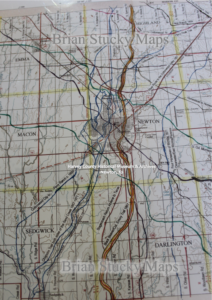
Detail Black Beaver Trail through Harvey County. Courtesy Brian Stucky Entire map available for study at HCHM Archives.
The Route
The trail enters Harvey County on S. Anderson Rd. Brian Stucky discovered a unique trail pattern to this ancient route. He identified seven pairs of wagon tracks sandwiched between two sets of Indian trails suggesting military wagons and equipment.
The main branch enters Newton south of the Newton Medical Center and crosses Walmart parking lot and interstate going north. There is a slight turn east near the Newton Country Club and continues north past St. Mary’s and Greenwood Cemetery and Chisholm Middle School, continues north along Duncan street over 12th street to Centennial Park.
The trail exits Harvey County at Spencer Rd and the Marion County line.
The maps, created by Brian Stucky, of the trails in Harvey County are available to study at the HCHM Archives, Newton, Ks.
Part 2 of this series on Black Beaver will focus on his return home.
Sources
- Wichita Daily Eagle 17 September 1922. Written by Joseph B. Thoburn.
- Pioneer & Indian Trails Map, Brian Stucky, HCHM Archives
- Thoburn, Joseph Bradfield. A Standard History of Oklahoma: An Authentic Narrative of Its …, Volume 1. The American Historical Society, 1916. Accessed via google books, p. 278-279.
- Warde, Mary Jane. When the Wolf Came: The Civil War and the Indian Territory. University of Arkansas Press, 2013. Accessed via google books, p. 50-51.

